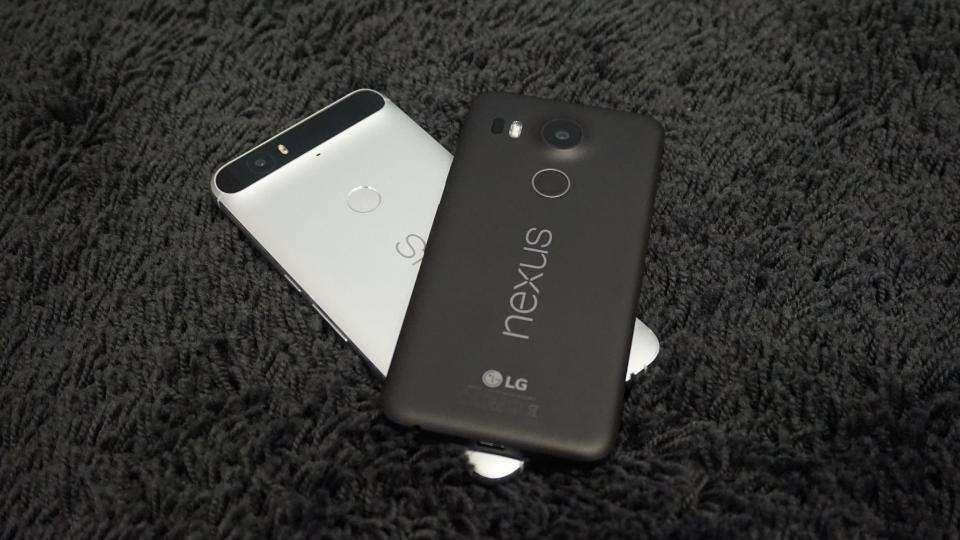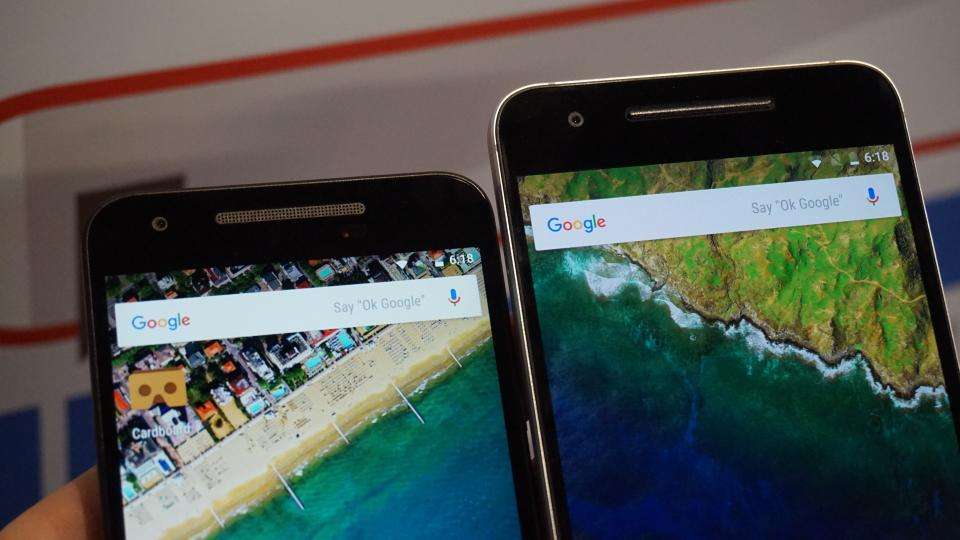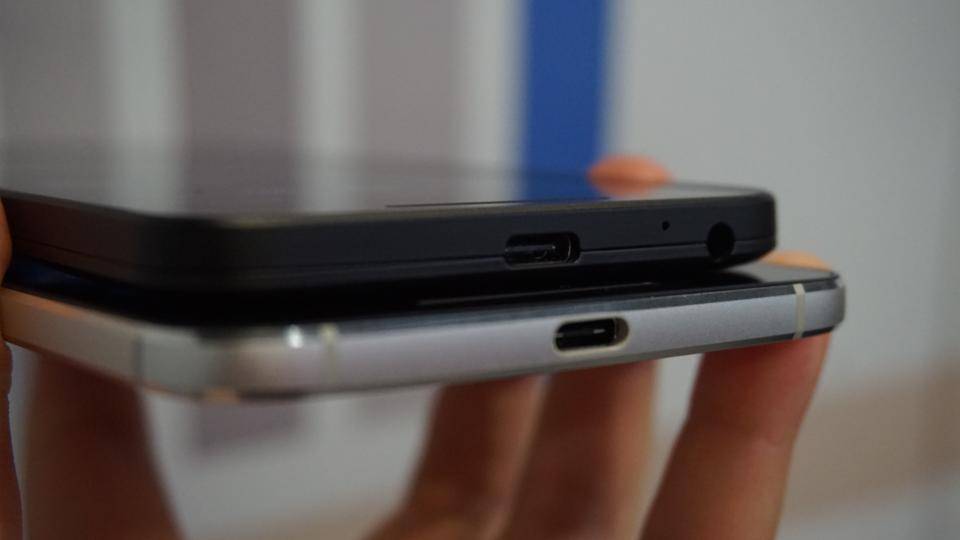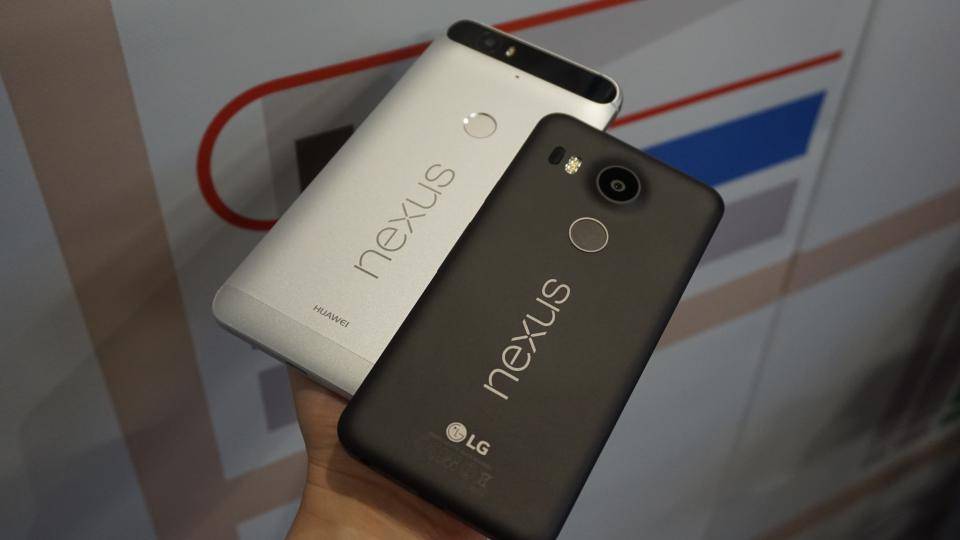Google’s own-brand phones are a bit like buses. Wait a year for a Nexus handset - or two years for a decent one given 2014’s lacklustre Nexus 6 - and suddenly two come along at once: the LG-made 5.2in Nexus 5X and Huawei-made 5.7in Nexus 6P . It’s Christmas come early then for Android purists, but with double the number of handsets to choose from this year, it only makes it twice as hard to choose the right one. To help make that decision a little bit easier, we've put both phones head to head to see which one you should consider buying.
Of course, given that LG were previously responsible for what's arguably the greatest Google device ever made, the Nexus 5 , and that Huawei hasn't always fared particularly well in the Expert Reviews phone lab, you might think it would be a done deal. However, the main problem we've had with Huawei handsets in the past is mainly down to the version of Android it uses, as the rather clinical iOS-style Emotion UI just doesn't match the elegant simplicity of stock Android.
However, now that Huawei's Nexus 6P has been freed from such constraints, it's all to play for in this year's biggest Android face-off. So with Android Marshmallow levelling the playing field, let's see how the new Nexus handsets square off.
Design
It's fair to say that neither handset is a looker. While the Nexus range has always had a slightly workhorse-like appearance, the new handsets are a long way off the lithe looks and sleek materials of the iPhone 6S and Samsung S6 .

The Nexus 5X is pretty conventional-looking really. The curved rear panel of soft-touch plastic is though broken up by an alarming number of bits and pieces. The camera bulge is pretty chunky for starters, then there's the cutouts for both a dual LED flash and laser focus system. Below this is a rear-mounted fingerprint sensor. There’s also the odd decision to write ‘Nexus’ in big silver letters down the back (yes the Nexus 5 did this, but that was black-on-black and even then it wasn’t its best feature). It all adds up to a lot of clutter. It measures roughly 147x73x8-to-9.8mm .
The Nexus 6P is an odd-looking beast, too. The camera, and the flash unit, are both housed in a handset-wide bulge at the top of the phone, but it's not quite as subtle as you might think. It's definitely less noticeable than the 5X's protruding camera, and its metal frame makes it look and feel like a classier handset. Below that again is a fingerprint sensor and the word ‘Nexus’ in big silver letters. Despite the bulge at the top, it’s actually our favourite of the two. It measures roughly 159x78x6.6-to-8.5mm .
Display
The Nexus 5X has a 5.2in Full HD display, which amounts to 424 pixels-per-inch. The Nexus 6P on the other hand uses a bigger 5.7in 2,560x1,440 display with a higher pixel density of 518 pixels-per-inch. The bigger difference is that the 5X uses an LCD/IPS display while the 6P uses an AMOLED panel.

As we’ve discussed a million times before, an LCD display is always much brighter than AMOLED panels, but AMOLED has better contrast and more accurate colours. Of course it will largely come down to how big a phone you want in your hand, and in your pocket. We narrowly prefer the best AMOLEDs over the best LCD displays, but the Nexus 6P's AMOLED display is a fraction warm for our liking, so the Nexus 5X just wins out in this instance.
Performance
The Nexus 5X uses a 64-bit Qualcomm Snapdragon 808 chipset running at 2.0GHz. That’s the same chipset that's found in the LG G4 but running at a slightly higher clock speed. The 6-core chipset isn’t quite a match for its 8-core competitors but we didn’t have any complaints about the speed of the G4. The Nexus 6P has an eight-core 2.0GHz Snapdragon 810 chipset. This is the same chipset that's inside the Sony Xperia Z3+ and HTC One M9 , and is much faster than the Snapdragon 808.

As a result, the Nexus 6P is also the more competent games machine, as its more advanced GPU is able to play more taxing games at faster, smoother frame rates than the Nexus 5X. There's not a lot in it, but if you like playing games on a big screen, the Nexus 6P is the clear winner here.
Battery: The Nexus 5X uses a 2,700mAh battery, whereas the Nexus 6P has a 3,450mAh battery. Unsurprisingly, the Nexus 6P lasted the longest in our continuous video playback test, but the difference isn't as great as you might think. While the Nexus 6P lasted 11h 58m, the Nexus 5X wasn't far behind, lasting 10h 53m. More importantly, both phones use the new reversible USB Type-C standard for fast charging, taking roughly an hour and a half to get back up to full charge.
Camera: Both phones are using the same 12.3 megapixel camera , with bigger-than-usual 1.55um pixels for less noise in low light conditions. The 6P is using a bright F2.0 aperture lens, with the 5X settling for a slightly less wide F2.2. Either way, camera performance is pretty similar, with no optical-stabilisation on either phone.

Storage & Price
The Nexus 6P will be available in 32GB, 64GB and 128GB models, costing £449, £499 and £579 respectively. Prices for the Nexus 5X start from £339 for 16GB and £379 for 32GB . Choosing the right amount of storage is important, as neither phone has a microSD card slot, leaving no room for extra storage expansion further down the line.
Verdict
Now that we've had both phones in for review, we can say that each one is an excellent handset. Some will obviously make their pick based on screen size alone, but the competing screen technologies and battery lives does give the Nexus 6P a clear advantage. The 6P is also the better-made phone and is available in more storage sizes. However, it is more expensive, and the big screen size won't be for everyone. Unless you're desperately after a large phablet with Android Marshmallow, we'd say the Nexus 5X has a wider appeal than its jumbo cousin. Its camera is just as good as the 6P's, and it's also much easier to hold, making it our current Nexus phone of choice.
